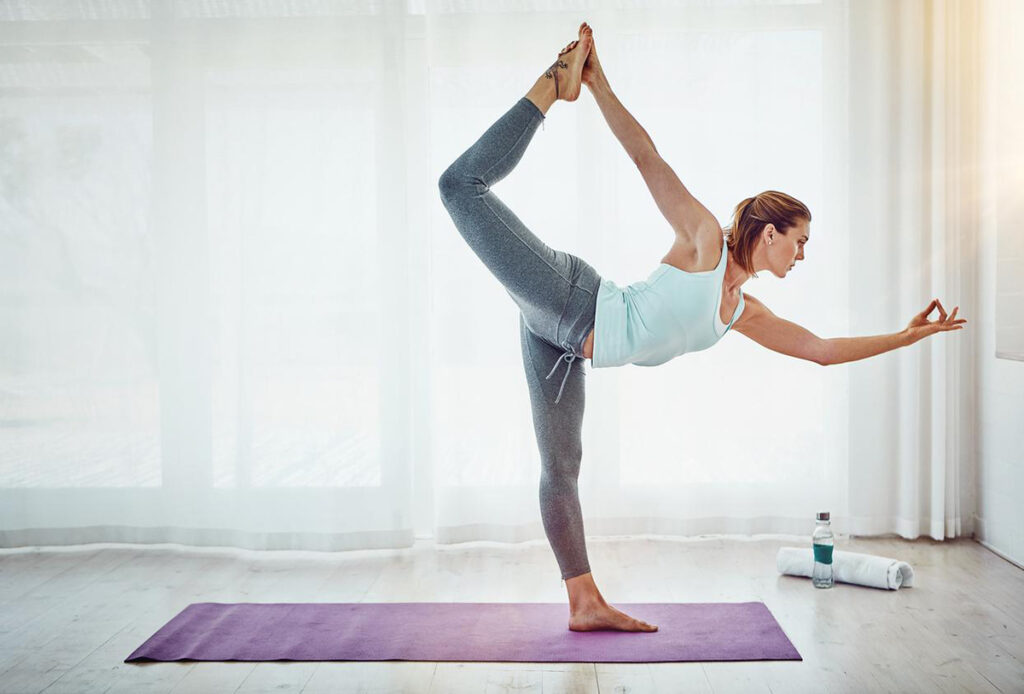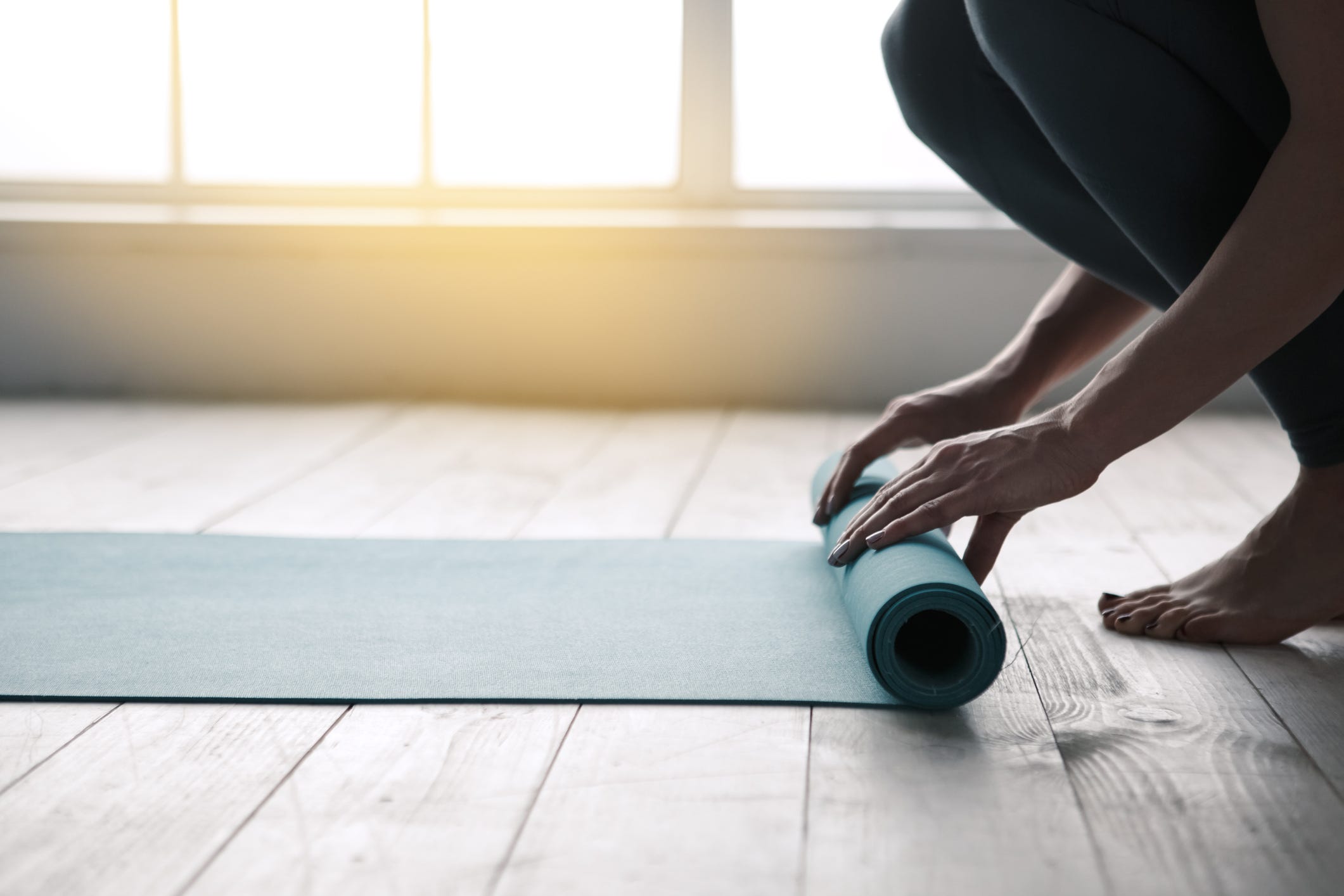
One of the many advantages of yoga is its ability to improve flexibility and strength. It can also help with stress reduction. Yoga can also improve your mental and physical health. Yoga can also improve your mood. You can do yoga no matter your level of experience, so it's worth looking into. These are just a few of the many benefits that yoga can offer.
Enhances flexibility
Flexibility is an important aspect of fitness. People tend to focus on cardio and strength training but often forget about flexibility. Stretching is a great way to increase range of motion as well as reduce stress on the joints. It can also release physical and mental tension. Stretching exercises are also good for stress relief and can reduce insomnia. These are just a couple of the many benefits yoga offers for physical fitness. Read on to find out more about the benefits of yoga and how you can benefit from it.

Strengthens
If you are looking to add some yoga to your exercise routine, it will help build muscle and strength. Yoga can be used as a supplement to cardio, weight training, stretching and other cardio activities. It helps build strength and flexibility throughout your body. It promotes overall well being and anti-inflammatory benefits. Whether you're a beginner or a seasoned yoga practitioner, you'll find that this exercise will make you stronger, leaner, and more flexible.
Reduces stress
Yoga can be a great way to reduce stress. Your body learns to deeply inhale and exhale, which helps calm the mind and provide more oxygen. Yoga relaxes the mind and improves problem-solving skills. Yoga practitioners need to practice yoga for at least fifteen minutes each day in order to reap these benefits. Breathing deeply is an important part of yoga practice. It slows down the heartbeat which triggers the benefits.
Improves mental health
Yoga can help reduce symptoms of anxiety, depression, and stress. It can help you feel better about yourself. It can be especially useful for women who have had trauma and are looking to improve the quality of their mental health. In one study, the Justice Resource Institute Trauma Clinic recruited women who had experienced posttraumatic stress disorder (PTSD). They were then invited to eight Hatha yoga sessions that lasted 75 minutes. They experienced a reduction in anxiety and depression.

Reduces chronic pain
Yoga can reduce chronic pain. A study by HealthPartners Institute found that those who practice yoga regularly were less likely to experience pain or fatigue. The yoga practice also had an impact on the quality of patients' lives. This exercise is suitable for patients with chronic pain. If yoga is right for you, a specialist will be able to help. Yoga is not an all-purpose exercise program.
FAQ
How does yoga work?
Yoga is all about alignment, breathing control, meditation, stillness, and stillness. Yoga creates peace and calm when done correctly.
Your body should be warmed up before you begin any yoga class. For example, you might do forwarding and backward bends (bending forward), side bends (bending down), twists, or side bends. These moves can loosen tight muscles and prepare your body for deeper poses.
Next is the balance pose known as "standing." During this pose, you stand with your feet, arms at your sides, and gaze down toward the floor. Your body should feel stable, centered, and balanced.
The next step is to move into deep stretching positions. These poses require you to lie on your back, face down, on the ground. Next, raise one leg and then the other. Then stretch your spine in all directions. You can keep your balance by holding onto something sturdy to stop you falling. If you don’t have anything to hold on to, place your hands on something nearby.
After performing all these poses you will be able move into a series stand poses. These include the mountain pose, warrior pose, downward facing dog, upward facing dog, plank pose, and final pose.
It is important to slow down and breathe deeply when you do yoga. Deep breathing helps to calm the mind and cleanses your lungs. Concentrate on your inhales, and exhales to do this. Make a habit of counting every time that you take a breathe.
Even while cooking, you can do yoga anywhere! Just follow the exact same steps but place your feet on the ground instead of laying down.
Try starting yoga for 10 minutes each day if you're a beginner. Remember that yoga is for everyone, no matter your age.
Is there a lot of sweating involved in yoga?
It all depends on what type of yoga you are practicing. Vinyasa flow, or power yoga, involves a lot of twisting and turning movements. It's not uncommon for people to sweat heavily when they practice yoga.
In contrast, Hatha yoga focuses on poses like forwarding bends and twists. Most practitioners won't sweat much because these poses aren’t too strenuous.
How much yoga is enough?
It's important not to forget that yoga isn’t a sport. There are no limits to the number of times you should practice before you feel tired. Instead, try to enjoy the experience by taking it slowly and enjoying every moment.
It's okay to fall off the wagon every now and again. Keep going where you are at the moment.
If you're new to yoga, begin with short sessions of 10 to 15 minutes and work your way up from there.
Are yoga mats expensive?
A high-quality, high-quality yoga pad costs between $20 and $100, depending upon its size and the type of material.
I'm already engaged in some form of physical activity. Do I still have the potential to benefit from yoga?
Yes! Yoga can be beneficial for anyone, even if they are not physically active. Combining yoga with other exercise such as running, biking, swimming or lifting weights will yield greater results.
This is because yoga helps with proper breathing techniques that help you burn calories more quickly.
It can also increase endurance. Yoga can be enjoyed by all levels of yoga, beginner to advanced.
Statistics
- The American Psychological Association recently shared that 84% of American adults feel the impact of prolonged stress (5). (healthline.com)
- Gentle yoga has been shown to ease some of the discomforts of tender, swollen joints for people with arthritis, according to a Johns Hopkins review of 11 recent studies. (hopkinsmedicine.org)
- Start your Fall off right with 20% off All Access Membership when you sign up by 9/25! (corepoweryoga.com)
- About one in seven U.S. adults practiced yoga in the past 12 months, according to a 2017 national survey. (nccih.nih.gov)
- According to the Agency for Healthcare Research and Quality, falls are incredibly common among older adults in nursing facilities. Even the simplest ones can increase the risk of death (24). (healthline.com)
External Links
How To
Yoga is a good exercise?
Yoga isn’t just for those who want to lose weight. Yoga helps you to develop flexibility, balance coordination, strength and calmness.
Yoga isn't just a form of exercise. These poses can help you to relax and calm down. They improve posture, concentration, and respiration.
The term "yogi" refers to someone who practices yoga. Yogis follow various forms of yoga, including Hatha, Ashtanga, Iyengar, Vinyasa, Bikram, Kundalini, Yin Yang, and Restorative.
There are many kinds of yoga. However, all share similar goals. Each type is focused on different aspects. There are many yoga styles, including Hatha, pranayama and meditation.
You don't need any equipment for some yoga exercises:
-
Sun Salutation - This series of 12 postures starts with a forward bend, followed by 10 other poses.
-
Warrior Pose: While holding a stick, or staff, you can do a warrior pose.
-
Triangle Pose-This pose requires you to lift one leg behind you while bending at the knee.
-
Standing Forward Bend - This pose is performed by sitting on the floor with legs straight and then folding forward at the waist.
-
Seated Twist – This pose can be performed while seated on either a chair or a mat.
-
Cobra Pose: This position is done lying on your back, arms raised.
-
Child's posing - This position is performed while facing up on the ground.
-
Cat/Cow Pose- This is a combination of a cat/cow pose. While lying face down, raise your upper body off the ground. Then roll over onto your side and place your hands under your shoulders.
-
Head Tilt--This pose requires that you tilt your head back with your eyes closed.
-
Shoulder stand - This position involves standing straight up with your arms and feet raised above the head.
-
Tree Pose – This is a pose where you kneel on your knees and place your hands underneath your shoulders.
-
Bow Pose - This pose is completed by bending forward from the hips and placing your palms on the ground.
-
Corpse Pose - This pose is held for five minutes.
-
Mountain Pose – This is a pose known as mountain pose. Your spine should be straightened and you must stand tall.
-
Legs up the wall Pose - This is a pose where you hang upside-down from a brick wall.
-
Side Angle Pose: This pose involves leaning against a wall, putting your right hand next to the wall, and then extending your left arm.
-
Plank Position – This is when you lay flat on your stomach, extend your left arm out and place your right foot in front of each other.
-
Bridge Pose - This pose is obtained by balancing on your elbows and toes.
-
Reverse Table Top Pose - This pose is attained by lying on your tummy and reaching your arms toward the ceiling.
-
Handstand - This position requires balance and strength. Hold yourself in between two walls or use a door frame to do this pose.
-
Half Moon Pose - This pose is also known as Hero Pose. This is achieved by standing on your hands, and toes.
-
Headstand (or handstand) - This position requires balance and strength. This pose is possible on a brick wall or on a doorframe.
-
Forearm Balance -- This pose involves your forearms resting on top of a tabletop.
-
Spinal Twist – This position is where you lie on your stomach while reaching for your arms.
-
Supported Boundangle Pose – This pose requires balance. To lean on a sturdy object, such as a tree trunk or an old beam, you'll need one.
-
Wide Leg Forwardfold - To achieve this pose, spread your legs apart while touching your toes.
-
Single Pigeon Pose - This pose is similar to the wide leg forward fold but has only one leg extended.
-
Extended Puppy Dog Poses-This pose is extremely relaxing. This is done by stretching your legs outwards and bending your knees.
-
Seated Forward Bend - This pose is sitting cross-legged and stretching your hamstrings and calves.
-
Crow Pose - This pose is difficult to do but very rewarding once you master it. The trick is to raise your arms higher than your head and lower them so that they touch the ground.